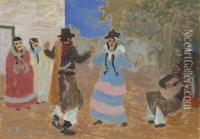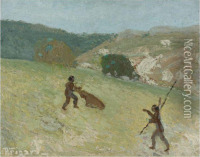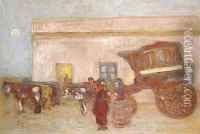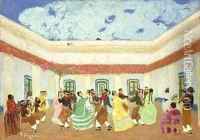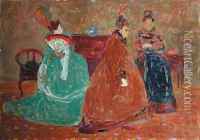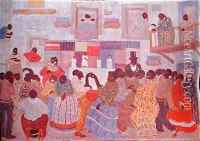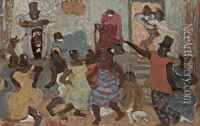Pedro Figari Paintings
Pedro Figari was a notable Uruguayan painter, lawyer, writer, and politician, born on June 29, 1861, in Montevideo, Uruguay. He is renowned for his work as a Post-Impressionist artist, with paintings that vividly depict the life and customs of his country.
Figari showed an early interest in art, but initially, he pursued a career in law, graduating from the University of Uruguay in 1886. Despite his legal career, his passion for painting persisted, and he began painting in his forties. He was largely self-taught as an artist, although he did spend some time studying in Europe, where he was influenced by the Post-Impressionist movement.
Upon returning to Uruguay, Figari dedicated himself to painting full-time. He sought to capture the spirit of Uruguay and Latin America in his work, focusing on historical and cultural themes such as colonial history, local customs, and the daily lives of the people, particularly the Afro-Uruguayan community. His art was characterized by the use of vivid colors and loose brushwork, aiming to express movement and vitality rather than detailed accuracy.
Figari's work was not initially well-received in his home country due to its divergence from the academic norms of the time. However, his paintings gained recognition for their unique style and cultural significance. Apart from his artistic endeavors, Figari was also involved in educational reform and was an advocate for the arts in Uruguay. He contributed to the development of art education in Uruguay and founded the Escuela Taller de Artes Plásticas (School Workshop of Plastic Arts) in Montevideo.
Pedro Figari passed away on July 24, 1938, in Montevideo. Today, he is celebrated as one of Uruguay's most important artists, with his works housed in museums and collections around the world. His legacy includes not only his vivid paintings but also his significant contributions to the cultural and educational landscape of Uruguay.



